Australian Tropical Rainforest Plants - Online edition
Atractocarpus fitzalanii (F.Muell.) Puttock subsp. fitzalanii

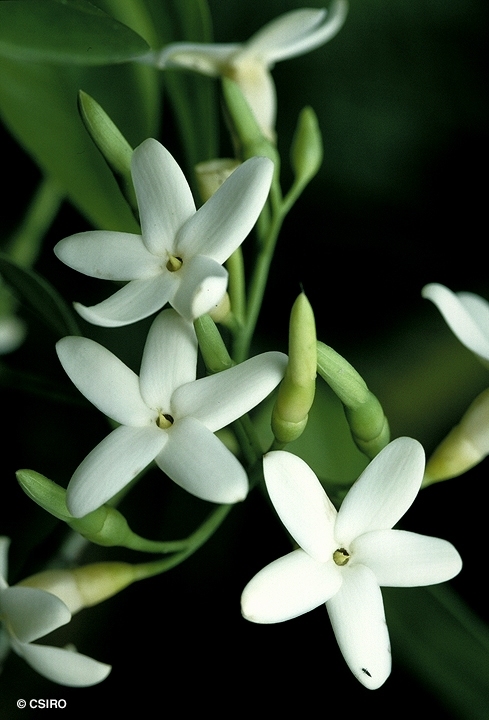
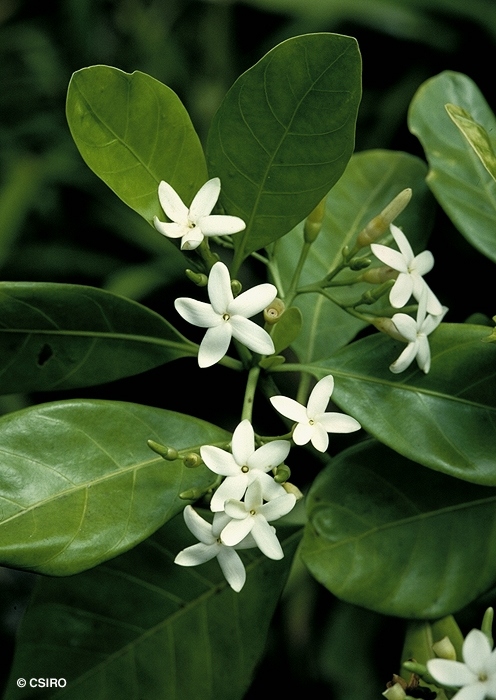
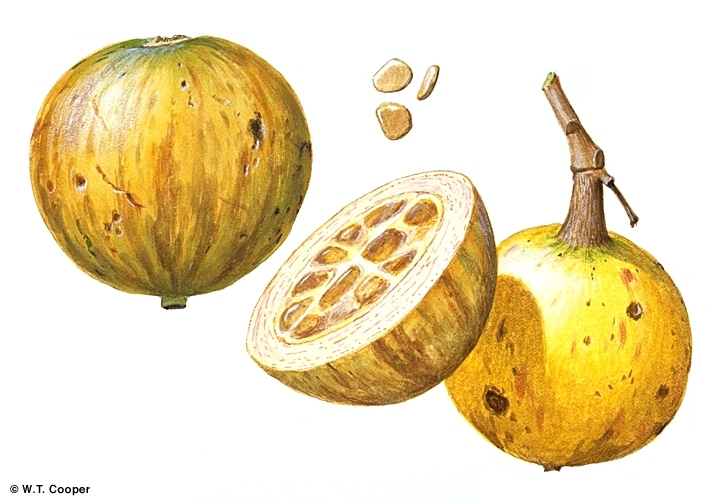

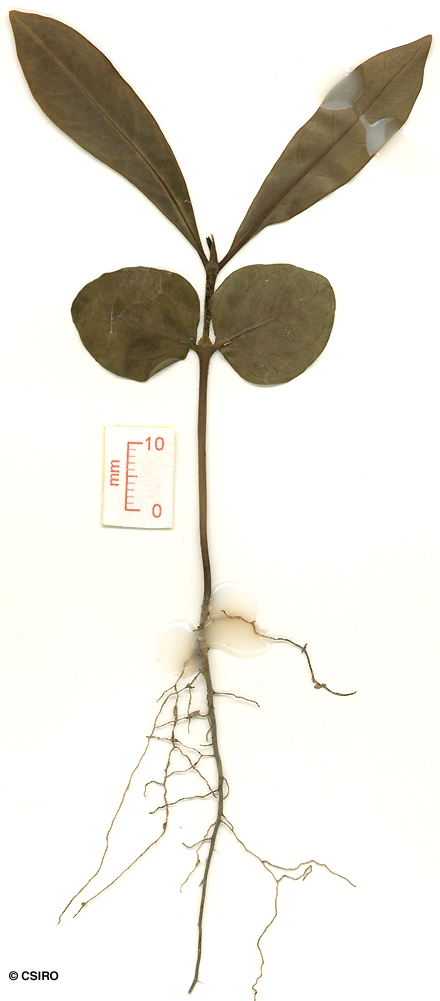
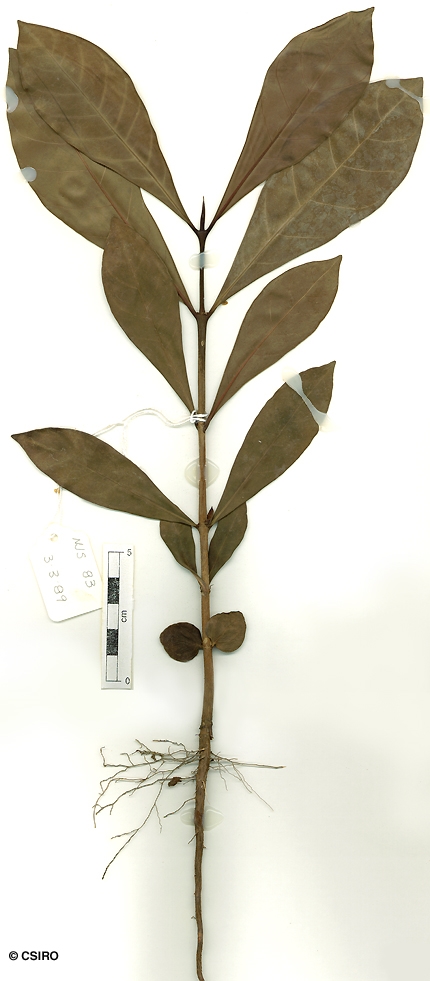
Puttock, C.F. (1999) Australian Systematic Botany 12: 285.
Orange Randia; Yellow Mangosteen; Brown Gardenia
Usually a small tree seldom exceeding 30 cm dbh. Blaze sometimes marked by red speckles.
Stipules often quite large, lanceolate, about 30 mm long, drawn out into a fine point at the apex, not twisted, enclosing the terminal bud on each twig. Stipules square in transverse section. Stipules glabrous on the outer surface. Stipular scars do not leave a prominent ring on the twigs. Petioles glossy, smooth, without scurfy scales and also without transverse ridges on the adaxial surface. Leaf blades about 9-20 x 4.8-10.5 cm.
Male flowers: Flowers on a pedicle about 1-15 mm long. Calyx lobes small and inconspicuous. Flowers quite large, corolla tube about 10 mm long with corolla lobes about 15 mm long. Anthers sessile, about 6-7 mm long, included in the corolla tube. Female flowers: Hypanthium about 7 mm long. Calyx tube about 6 mm long, lobes about 1 mm long. Corolla tube about 15 mm long, lobes about 20 mm long. Style + stigma about 14-17 mm long, swollen part about 9-12 mm long, stigmatic lobes about 6-10 mm long.
Fruits frequently solitary (rarely 2-4 together) globular or ellipsoid, about 60-70 x 35-100 mm, calyx often persisting at the apex. Pedicels about 10-15 mm long. Seeds numerous, flattened, about 8 x 6-7 mm. Cotyledons wider than the radicle.
Endemic to Queensland, occurs in NEQ and CEQ. Altitudinal range from sea level to 1200 m. Grows as an understory tree in well developed rain forest on a variety of sites.
A shrub or small tree now often cultivated for the showy perfumed flowers. It maintains a good shape and is adaptable and easy to grow.
This species is one of the few native plants known to have been used as an aphrodisiac by the aborigines. Cribb (1981).





